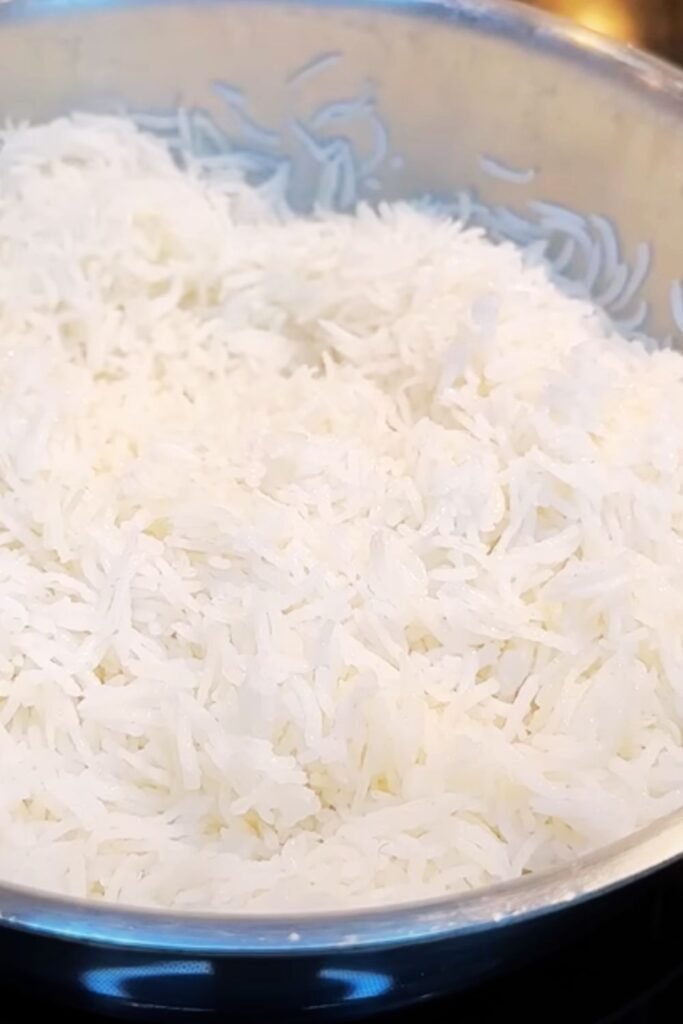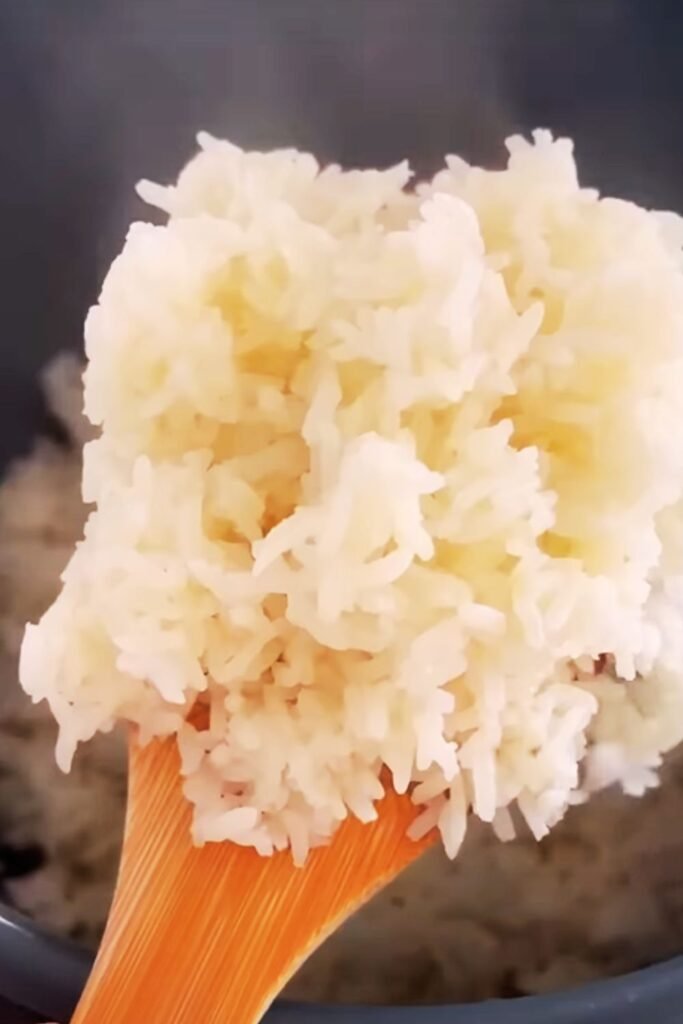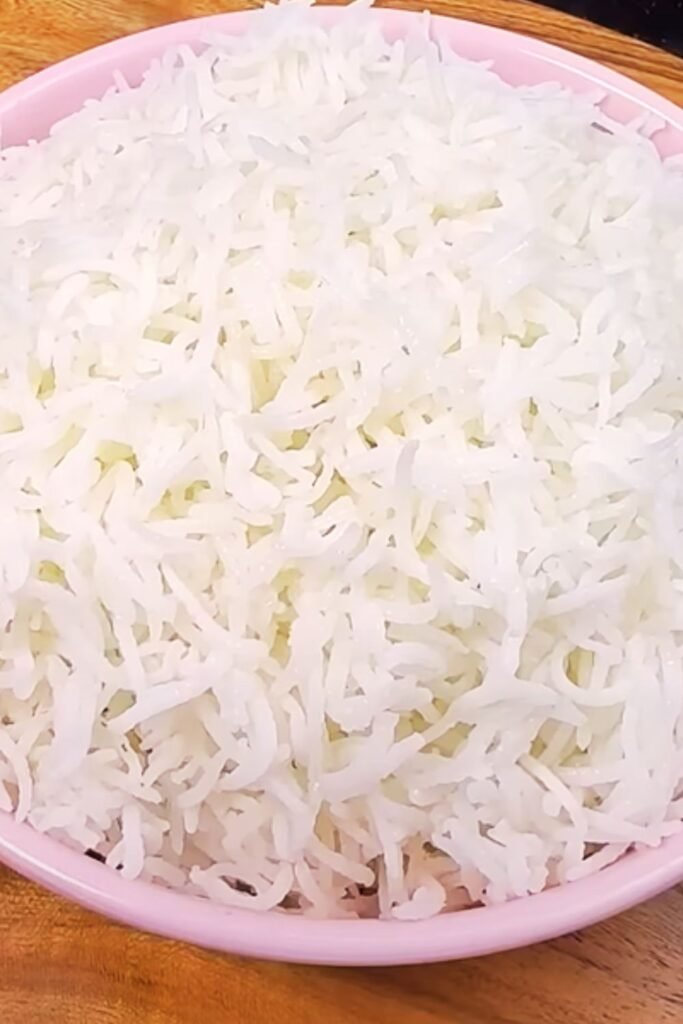I’ve been cooking rice for over two decades, and I can confidently say that mastering the perfect steamed rice is one of those fundamental skills that transforms your entire cooking game. Whether you’re preparing a simple weeknight dinner or hosting an elaborate feast, perfectly steamed rice serves as the foundation that elevates every dish it accompanies.
Through years of trial, error, and countless batches, I’ve discovered that achieving consistently perfect steamed rice isn’t just about following a recipe—it’s about understanding the science behind the process and knowing how to adapt to different rice varieties, cooking methods, and personal preferences. Today, I’m sharing everything I’ve learned about creating that ideal grain: fluffy, separate, and beautifully textured every single time.
Understanding Rice: The Foundation of Perfect Steaming
Before diving into techniques, let me share what I’ve learned about rice varieties and their unique characteristics. Not all rice is created equal, and understanding these differences has been crucial in my journey toward rice perfection.
Long-Grain Rice : Includes varieties like Basmati, Jasmine, and regular long-grain white rice. These grains are slender and tend to remain separate when cooked properly, making them ideal for pilafs, fried rice, and as side dishes.
Medium-Grain Rice : Slightly shorter and plumper than long-grain varieties, including Arborio and Calrose rice. These grains have more starch content and create a slightly stickier texture, perfect for risottos and sushi.
Short-Grain Rice : The starchiest variety, including sticky rice and many Asian varieties. These grains clump together naturally and are essential for dishes where the rice needs to hold together.
Brown Rice : Any variety with the bran layer intact, requiring longer cooking times and more liquid due to the fibrous outer layer that needs to soften.
The Science Behind Perfect Steamed Rice
Understanding what happens during the cooking process has revolutionized my approach to rice preparation. When rice absorbs water and heat, the starch granules swell and gelatinize, creating that tender texture we love. The key is controlling this process to prevent overcooking (which leads to mushiness) or undercooking (which leaves hard centers).
The ideal ratio of water to rice varies depending on the variety, but I’ve found that most long-grain varieties work beautifully with a 1.5:1 water-to-rice ratio, while short-grain varieties often need slightly more water due to their higher starch content.
My Foolproof Steamed Rice Method
After countless experiments, I’ve developed a method that works consistently across different rice varieties and cooking conditions. Here’s my step-by-step approach:
Ingredients for Perfect Steamed Rice
| Ingredient | Amount | Purpose |
|---|---|---|
| Long-grain white rice | 1 cup | Base ingredient |
| Water | 1.5 cups | Cooking medium |
| Salt (optional) | 1/2 teaspoon | Flavor enhancement |
| Butter or oil (optional) | 1 teaspoon | Prevents sticking and adds richness |
Equipment Needed
- Heavy-bottomed saucepan with tight-fitting lid
- Fine-mesh strainer
- Measuring cups
- Fork for fluffing

Step-by-Step Instructions
- Rinse the Rice Thoroughly I always start by rinsing my rice until the water runs clear. This removes excess starch that can make the rice gummy. I place the rice in a fine-mesh strainer and rinse under cold running water, gently agitating the grains with my fingers.
- Measure Water Precisely Using the correct water-to-rice ratio is crucial. For long-grain white rice, I use 1.5 cups of water for every cup of rice. I measure this carefully every time—even a quarter cup difference can affect the final texture.
- Combine and Bring to Boil I add the rinsed rice, measured water, and salt (if using) to a heavy-bottomed saucepan. Starting with high heat, I bring the mixture to a rolling boil while stirring occasionally to prevent sticking.
- Reduce Heat and Cover Once boiling, I immediately reduce the heat to the lowest setting and cover the pan with a tight-fitting lid. This is where the magic happens—the steam trapped inside creates the perfect cooking environment.
- Steam Without Peeking I let the rice steam for exactly 18 minutes without lifting the lid. This is crucial because lifting the lid releases steam and disrupts the cooking process. I set a timer and resist all temptation to check.
- Rest and Fluff After 18 minutes, I remove the pan from heat but keep it covered for an additional 10 minutes. This resting period allows the rice to finish cooking in its own steam and helps achieve that perfect texture. Finally, I remove the lid and fluff the rice gently with a fork.
Rice Variety Cooking Guide
Different rice varieties require slight adjustments to achieve perfection. Here’s my comprehensive guide based on years of experience:
| Rice Type | Water Ratio | Cooking Time | Resting Time | Special Notes |
|---|---|---|---|---|
| Long-grain white | 1:1.5 | 18 minutes | 10 minutes | Rinse until water runs clear |
| Basmati | 1:1.5 | 15 minutes | 10 minutes | Soak 30 minutes before cooking |
| Jasmine | 1:1.25 | 15 minutes | 10 minutes | Less water due to natural moisture |
| Short-grain white | 1:1.25 | 20 minutes | 15 minutes | Higher starch content |
| Brown rice | 1:2 | 45 minutes | 15 minutes | Longer cooking due to bran layer |
| Wild rice | 1:3 | 50 minutes | 10 minutes | Actually a grass, not true rice |
Troubleshooting Common Rice Problems
Over the years, I’ve encountered every possible rice disaster and learned how to fix or prevent them. Here are the most common issues and my solutions:
Mushy or Sticky Rice : Usually caused by too much water or overcooking. Next time, reduce water by 1/4 cup and check doneness a few minutes earlier.
Undercooked or Hard Rice : Not enough water or insufficient cooking time. Add 2-3 tablespoons of hot water, cover, and steam for 5 more minutes.
Burnt Bottom Layer : Heat too high or pan too thin. Use heavy-bottomed cookware and ensure heat is at lowest setting during steaming phase.
Uneven Cooking : Lid doesn’t fit tightly or heat isn’t distributed evenly. Invest in quality cookware with tight-fitting lids.

Advanced Techniques for Rice Excellence
Once you’ve mastered the basic method, these advanced techniques can elevate your rice game:
The Toasting Method
I sometimes toast my rice in a dry pan for 2-3 minutes before adding liquid. This develops a nutty flavor and helps individual grains maintain their structure. The rice should smell fragrant and look slightly golden.
The Pilaf Technique
For extra-fluffy rice, I sauté the rice in a little oil or butter before adding liquid. This coats each grain with fat, helping them stay separate and creating a richer flavor profile.
Absorption Method Variations
Depending on what I’m serving the rice with, I sometimes substitute part of the water with chicken broth, coconut milk, or other flavorful liquids. This infuses the rice with complementary flavors.
Serving Suggestions and Pairings
Perfect steamed rice is incredibly versatile and pairs beautifully with countless dishes. Here are some of my favorite combinations:
Asian-Inspired Meals
- Teriyaki chicken with steamed vegetables
- Korean bulgogi with kimchi
- Thai green curry with fresh herbs
- Chinese stir-fries with mixed vegetables
Comfort Food Classics
- Slow-cooked stews and braises
- Grilled meats with herb butter
- Roasted vegetables with garlic
- Curry dishes from any cuisine
Light and Fresh Options
- Steamed fish with ginger and scallions
- Vegetable curries with coconut milk
- Grilled tofu with teriyaki sauce
- Fresh herb and vegetable bowls
Storage and Reheating Tips
Proper storage ensures your perfectly steamed rice maintains its quality for future meals. I cool leftover rice quickly and refrigerate within two hours of cooking. Properly stored rice keeps for up to four days in the refrigerator.
For reheating, I add a tablespoon of water per cup of rice and microwave in 30-second intervals, fluffing between each interval. Alternatively, I steam it gently on the stovetop with a splash of water until heated through.

Nutritional Benefits of Steamed Rice
Steamed rice, especially when prepared with minimal added fats, provides essential carbohydrates for energy and contains important nutrients. Brown rice varieties offer additional fiber, B vitamins, and minerals. White rice, while lower in fiber, is often enriched with folate and iron.
Understanding the nutritional profile helps me incorporate rice appropriately into balanced meals, pairing it with proteins, vegetables, and healthy fats for complete nutrition.
Q&A Section: Your Rice Questions Answered
Q: Why does my rice sometimes turn out mushy even when I follow the recipe exactly? A: Mushiness usually comes from too much water, overcooking, or not rinsing the rice properly. I’ve found that rice absorption can vary based on humidity, age of the rice, and even altitude. Try reducing water by 2-3 tablespoons and ensure you’re rinsing until the water runs completely clear.
Q: Can I cook rice without rinsing it first? A: While you can skip rinsing, I never recommend it. Unwashed rice releases excess starch during cooking, leading to a gluey texture. The few extra minutes spent rinsing always results in better texture and taste.
Q: How do I know when my rice is perfectly done? A: Perfect rice should be tender throughout with individual grains that separate easily when fluffed with a fork. There should be no hard centers or mushy exteriors. If you’re unsure, taste a few grains after the resting period.
Q: Can I make steamed rice ahead of time for meal prep? A: Absolutely! I often prepare large batches for the week. Cool the rice quickly, store in airtight containers, and refrigerate. It reheats beautifully and maintains good texture for up to four days.
Q: What’s the difference between steaming rice and using a rice cooker? A: Both methods use steam to cook the rice, but stovetop steaming gives you more control over texture and timing. Rice cookers are convenient and consistent, but I prefer the stovetop method for achieving specific textures and for smaller batches.
Q: Why does restaurant rice always taste better than mine? A: Restaurants often use specific rice varieties, precise ratios, and sometimes add a small amount of oil or butter. They also typically use heavy-duty equipment that distributes heat evenly. Following my techniques closely will get you restaurant-quality results at home.
Q: Can I add seasonings directly to the cooking water? A: Yes! I often add salt, a bay leaf, or a small piece of ginger to the cooking water. Just remember that strong seasonings can overwhelm the rice’s natural flavor, so start with small amounts.
Q: How do I prevent rice from sticking to the bottom of the pan? A: Use a heavy-bottomed pan, keep heat at the lowest setting during steaming, and avoid stirring once you’ve covered the pot. A thin layer of oil or butter in the pan before adding rice can also help prevent sticking.
The journey to perfect steamed rice has taught me patience, precision, and the importance of understanding ingredients at a fundamental level. Every grain tells a story, and with these techniques, you’ll be writing delicious chapters in your own culinary adventure. Remember, practice makes perfect, and each batch brings you closer to that ideal bowl of fluffy, perfectly steamed rice that transforms any meal into something special.